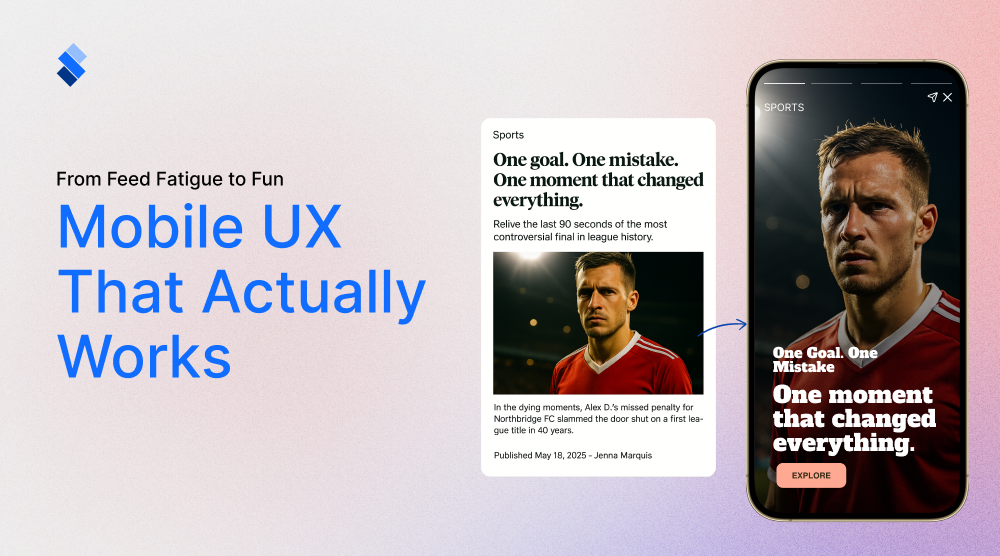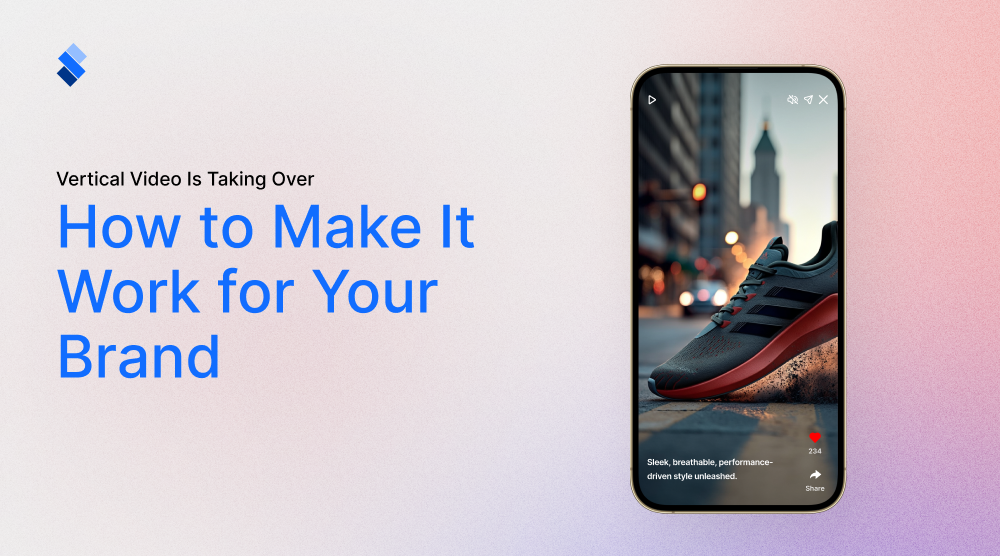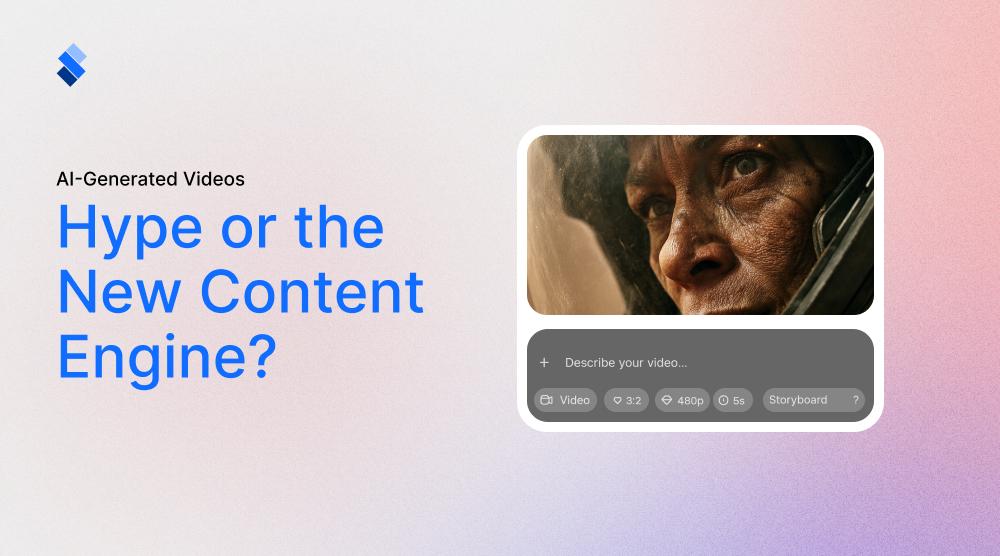Vertical vs Horizontal Video: What you should use?
The difference between vertical vs horizontal video isn't so much about which is better, but more about when and how to use them.

Videos are an integral part of modern marketing. Be it TikTok, YouTube, Instagram, Facebook, or whatever other platform you pick, videos are a huge part of what viewers focus on. While there are many different types of videos, two mutually exclusive types are the subject of our article. Vertical and horizontal. To the inexperienced reader, the difference between the two might seem small. But, we are here to tell you that both types have major benefits and drawbacks and that you ought to think long and hard before picking one. So, let's now closely compare and evaluate vertical vs horizontal video.
Understanding the difference
To be fair to our less experienced readers, it is quite natural to assume that there isn't much difference between vertical and horizontal videos. After all, if you play the same video, what difference will it make if it is a bit wider or taller? Well, plenty of market research has shown us that the difference is quite substantial. For instance:
- Snapchat has found that vertical ads have up to 9 times more completed views than vertical ones.
- Databox ran a Facebook study that shows that vertical videos have 13,8% more visibility than horizontal videos and 90% more visibility than posts with images.
- HubSpot has shown that vertical videos on Instagram Stories have a 33% higher reach than horizontal videos.
- Buffer has found that vertical videos on Instagram have an engagement rate that’s 2-3x higher than horizontal videos
Considering these stats alone might make us inclined to solely focus on vertical videos. But, as it is usually with marketing, the solution isn't so simple. Horizontal videos still have a role to play in marketing, and you'd be smart to use them strategically.
Vertical orientation and viewer comfort
There are multiple reasons why vertical videos perform so well on social media platforms. The biggest one is that people tend to view social media platforms on mobile devices. According to Lyff Marketing, 91% of all social media users access channels via mobile devices, and almost 80% of all time spent on social media is on mobile devices.

Vertical videos align with the natural way users hold their mobile devices. So, for mobile-first platforms vertical videos provide a seamless, immersive experience by filling the entire screen. Users can easily interact with the videos, or keep scrolling through the platform without having to rotate their phone. This has a profound effect as the comfort of viewers is a big factor in user activation. All the stats point to the conclusion that vertical videos outperform horizontal ones. Yet, this would be a superficial viewing of the marketing results. What we would invite you to do is to consider the unique value that horizontal videos bring.
Horizontal videos and implied quality
While a lot of people use mobile phones to view content, there is still a substantial number that use their computers. Whether it is desktop, laptop, or TV viewing, horizontal videos are more applicable as they better fit the landscape format. Furthermore, horizontal videos are also associated with cinematic quality, enhancing the viewing experience for long-form or narrative-driven content. Vertical videos are more associated with short, bite-sized video content that is supposed to grab your attention for a quick second. Meanwhile, horizontal videos imply value and quality, which can be a useful factor for viewership. In our view, horizontal orientation is essential for platforms like YouTube, websites, and streaming services where users often seek a more polished and professional feel. It allows for richer compositions, like wide scenes or interviews with multiple subjects, making it ideal for storytelling or instructional content.
Marketing effects
Whether you are a publisher or simply a brand manager, you will create content to reach people. As such, it is important to have a clear view of the different marketing effects between vertical and horizontal videos. As the stats show, by creating vertical videos, you will be able to maximise engagement on social media by occupying the full screen and enhancing user focus. Also, keep in mind that social platforms often favour native content. Therefore, vertical videos have a better chance of being promoted by algorithms, increasing organic reach and visibility. This format is also ideal for web stories, which are mobile-friendly and prioritised in search engine results, giving brands a boost in discoverability.
While social platforms have adapted to vertical formats, horizontal videos still perform best on platforms like YouTube and Facebook Watch or on native websites where audiences may prefer longer high-quality content. By creating them, you will broaden your brand's reach to audiences that consume content on larger screens or who associate horizontal orientation with professionalism. For example, tutorial videos, testimonials, and detailed product showcases are better suited for horizontal layouts. After all, they are optimal for longer, in-depth narratives and brands that need to communicate complex information.
Examples
What should be obvious by now is that every serious marketing strategy ought to entail both vertical and horizontal videos. To better illustrate this, we will give you a couple of examples of how and when to use both vertical and horizontal videos.
Sports goods company promoting a new product line
Let's say that you run a sports goods company and you've come up with a new product line. Naturally, you wish to promote it and create as big of a buzz for your product as possible. If you have enough time and resources, this is what you should do.

Create a vertical video where you showcase athletes using the product in action, focusing on movement and agility. For example, a running shoe might be shown in slow-motion shots of runners tackling various terrains. Or a protective gear for leg kicks shows how a fighter is blocking and throwing kicks. These clips can leverage popular music and quick cuts to create a sense of energy and excitement. And, because they are vertical, they will be optimised for thumb-stopping visuals that are immediately engaging on mobile.
On the other hand, a detailed horizontal video could be created for YouTube and the company’s website. Here you could include an expert or athlete discussing the shoe’s design, technology, and unique features in depth. This video format allows for a story arc where users see how the product performs in various scenarios, emphasising the product’s durability, versatility, and key selling points.
Airline company promoting a new destination
Here you would use vertical videos on Instagram Stories and Facebook Stories to build excitement around the destination with scenic teasers, showing quick clips of landmarks, local cuisine, and cultural experiences. These can be part of a “countdown” series, hinting at the upcoming destination reveal. An option is to partner with influencers to capture short, authentic, vertical clips of their experiences flying with the airline and exploring the new destination. This gives potential travellers a glimpse of the journey and on-site experiences. UGC is excellent for vertical videos, as most people will create UGC with their phones.

The second step is to produce a polished, horizontal video for YouTube and your airline’s website that acts as a mini-documentary of the destination. This could include interviews with locals, a guided tour through famous landmarks, and a narrative that invites viewers to imagine themselves on a journey. The airline could use this video in digital ads on platforms like YouTube and incorporate it on the destination’s booking page, creating a seamless and inspiring experience that leads to conversion. If the airline is cross-promoting with another company, horizontal videos are ideal as they give plenty of room (both on the screen and in duration) for cross-promotion.
Beauty brand promoting a new skincare line
Here it is best to use short vertical videos on TikTok and Instagram Stories featuring beauty influencers demonstrating the application of the skincare products, quick tips, or "before and after" results. This helps with reach and engagement in a more personal, relatable way.
We are talking about fun, bite-sized clips where influencers share their routine, highlighting the product benefits and tips for incorporating it into daily skincare.

If a person is interested in the product, they would likely wish to know more about it. Here would be ideal to introduce a professionally filmed, horizontal video on YouTube and the brand’s website. You could offer a full skincare routine tutorial, featuring the product as the centrepiece. This can also include insights from dermatologists or skincare experts, building credibility.
The main thing here is the change of tone. In contrast to the vertical video, here we would see a more thorough, educational approach, allowing the brand to address FAQs and showcase the product's impact on different skin types.
Real estate company showcasing a new luxury property
A vertical video ought to give potential buyers short, curated glimpses of the property, such as breathtaking views from a balcony or a walkthrough of the living area. A trailer (pun not intended) for the video of the entire home. These clips could be part of a “first look” series, building interest. Ideally, these teaser clips create urgency and exclusivity, ideal for social media where quick visuals can entice viewers to reach out for more information.

An interested viewer will likely head to the company website where they could see a more detailed, horizontal video. Here you would provide a full virtual tour of the property, highlighting every room and key feature. It could include commentary from a realtor describing amenities, location benefits, and luxury features.
Event coverage and brand storytelling
The last example is pretty much applicable to every industry. Namely, if you wish to gain a boost in your viewership, one of the best strategies is to host live events. Of course, simply heading to your social media profile and starting a live recording won't have that much of an effect. Instead, the real-time event needs to be a part of a larger strategy. And that larger strategy ought to include vertical and horizontal videos.
During live events (such as brand-sponsored festivals, conferences, or in-store pop-ups), use vertical videos on Instagram and TikTok to capture real-time moments. These could include live interviews, attendee reactions, and behind-the-scenes clips, creating excitement and encouraging users to follow the event in real time. A smart idea is to push notifications or vertical storytelling that can also draw viewers in, inviting them to “tune in” or follow updates on the event, enhancing real-time engagement.

Once the event is done, release a high-quality horizontal recap video on YouTube, Facebook, and the brand’s website. This video can combine footage from the event, interviews, highlights, and calls to action for future events. The horizontal format allows for a cinematic style, capturing the ambiance and energy of the event in a more immersive way.
Repurposing vertical and horizontal videos
The examples we've provided might give you the wrong impression that you need to separately create horizontal and vertical videos. This is by no means the case. Horizontal videos can always be cropped up and separated to create shorter, vertical videos. This gives you an easy way to repurpose old content. Or, simply create new ones with both vertical and horizontal formats in mind. You can even use AI to create the missing parts of a horizontal video and make it vertical. What's important is that you remember the purpose of these video formats and use them with the right goal.
Final thoughts on vertical vs horizontal video
Who would have thought that something as simple as video orientation would have such a big impact on its reach and overall role in a marketing strategy? Now that you are aware of it, we would strongly suggest that you start creating videos of your own. StorifyMe is always willing to give you a hand and help you create top-notch videos (be it vertical or horizontal). So, if you have any further questions, don't shy away from contacting us.







